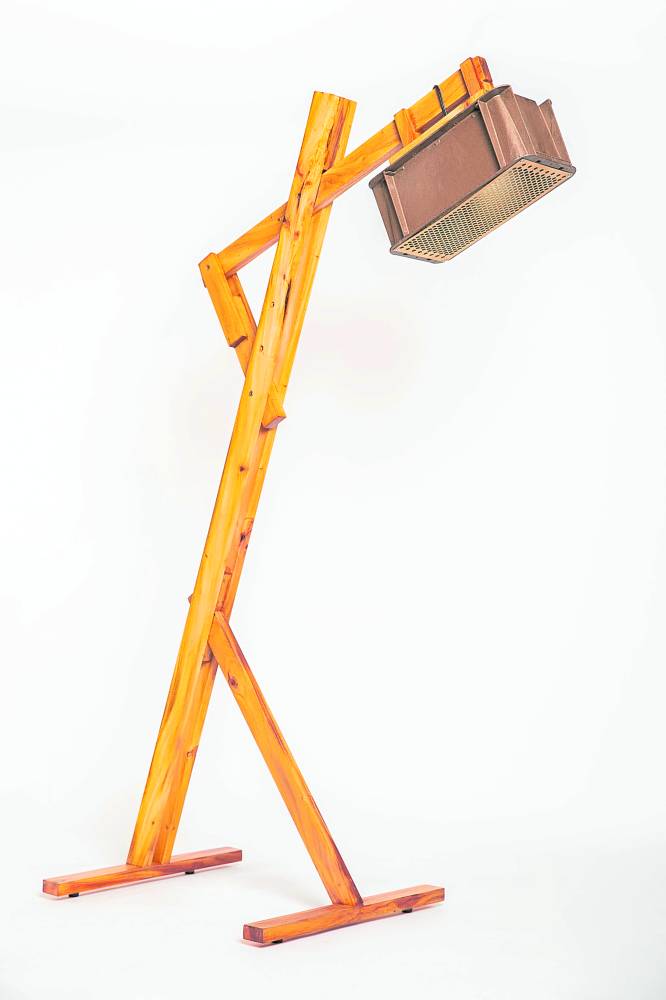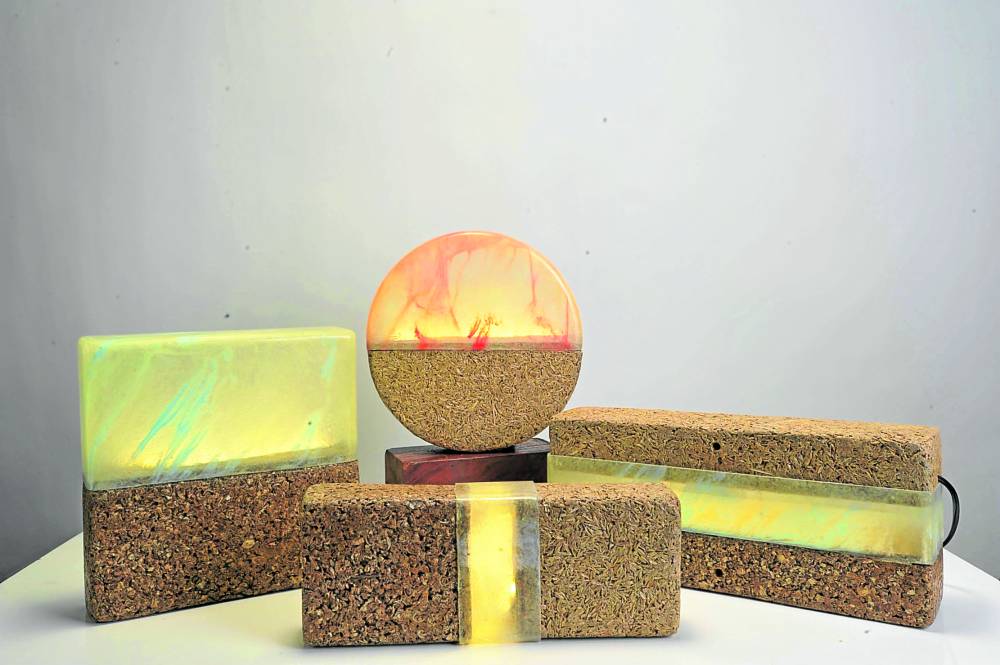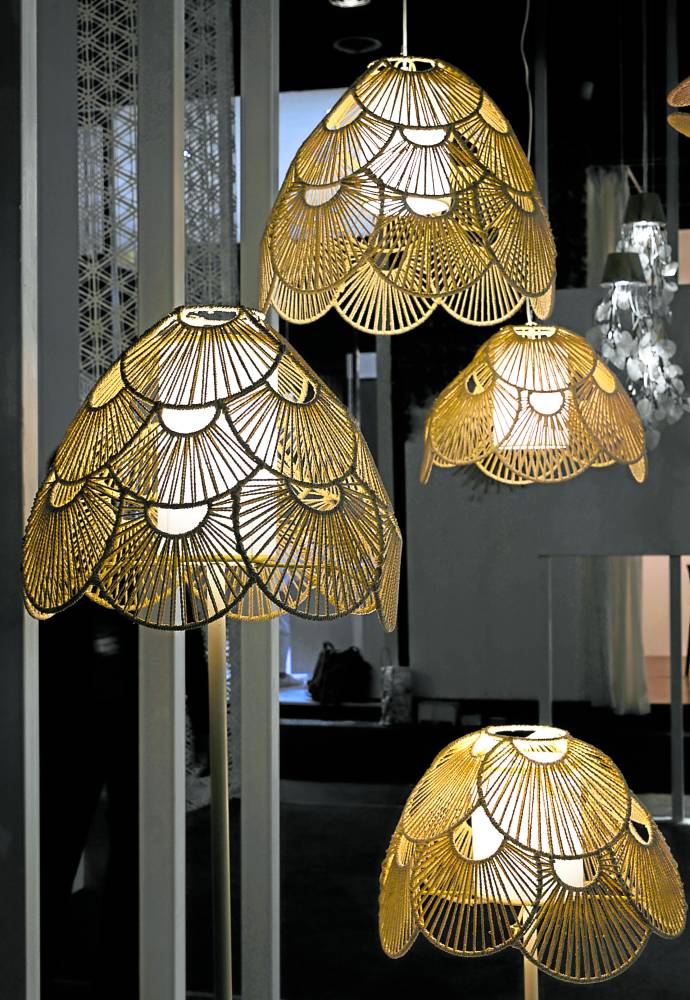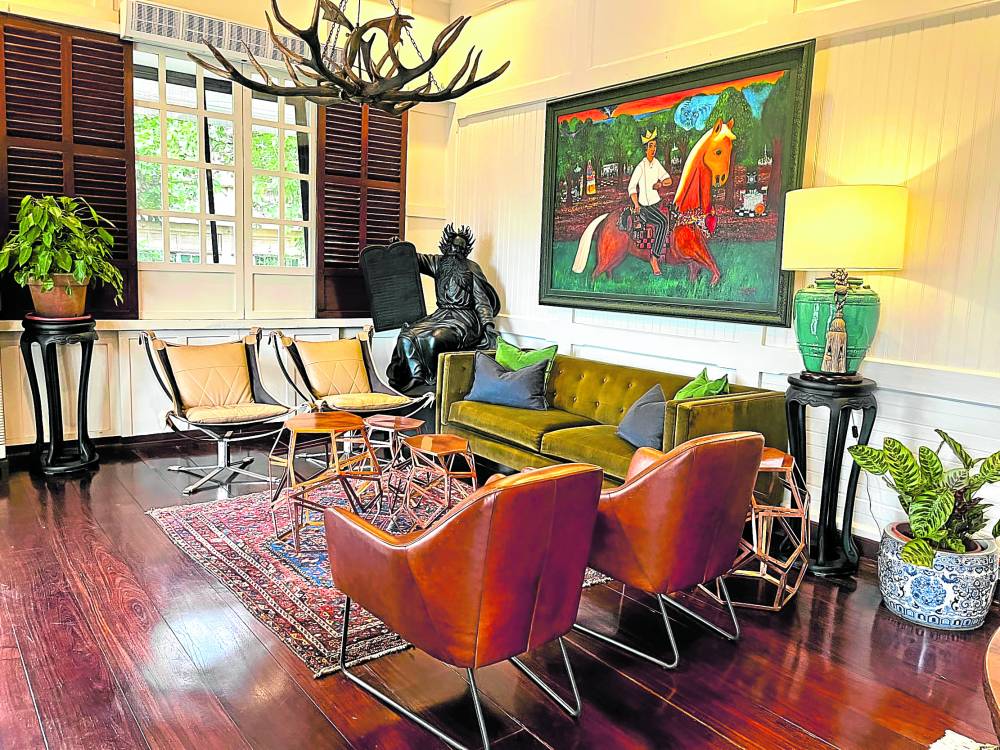
Plastic meets plant material is the essence of industrial designer Stanley Ruiz’s latest lighting fixtures for Design Center Philippines (DCP). The striking contrasts of the bakong plant molded into plastic cases for lightbulbs with metal mesh diffusers and a wooden base and frame expresses the title of the new collection, “Contrapunto (Counterpoint).”
As an industrial designer, Ruiz is tasked to develop products that resonate with users. Aside from creating timeless, visually appealing and commercially viable styles, the products must enhance the user experience and how they interact with them. His style is often described as a combination of folk techniques, hand crafting and clean lines that highlight the material.
“Contrapunto” expresses opposing concepts such as factory versus handmade, machine versus backyard, mass production versus small batches in the design, says Ruiz.
The frames of the table lamp, suspended lamp and floor lamp are made of biocomposite plastic injection molded bins. Plastic injection molding is a manufacturing process wherein a heated material is injected into molds to produce large volumes of the same object. Plastic containers, trash cans and storage bins are common products.

A biocomposite is a new material created from two constituents, one of which is plant-based.
Believed to be poisonous, bakong, commonly called the spider lily, grows around Laguna de Cagayan in Cagayan Valley. Fishermen considered them water pests that they are often cut and thrown away.
Studies have found that the bakong can be a source of organic fiber for construction materials. For the DCP project, one manufacturer transforms the bakong into pellets while another factory combines them into plastic made with renewable materials and likewise produces the bins.
“‘Contrapunto’ is basically a counterpoint of industry and craft. The plastic bins are industrial-based in the production process and the material. I applied craft by creating a wooden support structure that outlines the bins,” says Ruiz.
While the bins come from the factory, all the other constituents can be handcrafted and mounted at home to make the final product.
Sustainable and sculptural

The use of bakong is a continuation of DCP’s projects of recycling agricultural wastes such as corn husk, coconut sheaths, rice husks and peanut shells into sellable, partially processed materials that can be used by manufacturers to upgrade their designs.
In the past, Ruiz designed translucent, woven suspended lampshades made of corn husk twine, tikog, anabo and papaya bark for different manufacturers. Leaves made from coconut sheaths floated in the air as chandeliers and floor lamps.
While the coconut sheath lighting fixtures evoked an ethereal quality, he created earthier desk lights sandwiched between molded peanut shells and rice husk. Palm husks were embedded on fixtures made of cast resin disks and capsules that looked like sculptures.
“I worked with different companies using a wide variety of their techniques—weaving, molding, cutting and shaping these sustainable materials,” he says.
One of Ruiz’s most salable designs is the Petiole pendant lamp for exporter Schema. Made of industrial materials, it is a light source supported by a marble cylinder and a mesh of galvanized iron. It’s one of his penchants for contrasts—the play of solid marble against lacy patterns created by the mesh cover.
For Kenneth Cobonpue, Ruiz’s Whisk Large, a pendant lamp whose painted steel frame is an exaggeration of the wire whisk, complements the brand’s playful image.
“I don’t want to design something that you can buy from a typical retailer. It’s got to be special. Our production process is not industrial. I use it as an advantage to create special designs that are more expressive but practical. They should be functional and the cost should not be prohibitive,” he explains.
Wonder and surprise

Though his Estudio Ruiz Design Consultancy has been tasked to conceptualize lighting fixtures for many companies, he doesn’t want to be pigeonholed into specializing in a certain category.
His works for Conrad Manila and Radisson hotels are like art. At Conrad’s Brasserie on 3, six panels of assembled wood chips form abstractions of patterns inspired by the geometric shapes in indigenous textiles. In the public spaces of Radisson, the minimalist lines of his sculptures highlight the beauty of pumice stone and wood.
Ruiz’s collaboration with manufacturers and brands here and abroad are impressive. Yet, he’s not as known as Cobonpue or Vito Selma, whose advantage is having their own factories to design their vision.
“My practice is European. I design for manufacturers,” he says. When Ruiz lived in Bali and New York, he designed to meet the requirements of brands. To step out of their shadows, he set up his studio in Brooklyn and made news with such products as a wooden clock with an abstracted face, a bowl shaped with thin steel rods with twigs and audio speakers covered with tree logs.
Since returning to the Philippines, Ruiz has been collaborating with government agencies, manufacturers, and has been teaching at the University of the Philippines.
One of his goals for DCP’s projects is that his designs such as the “Contrapunto” collection go beyond the prototype stage and sell in the marketplace.
“I hope to impart a sense of wonder and surprise to the objects that I create by putting a twist on conventional products. A bin is no longer a storage item but it has been transformed into a container of light,” says Ruiz.
“Among the feedback that I’ve received over the years, ‘poetic and quietly beautiful’ sounds endearing to this day.” —CONTRIBUTED








































